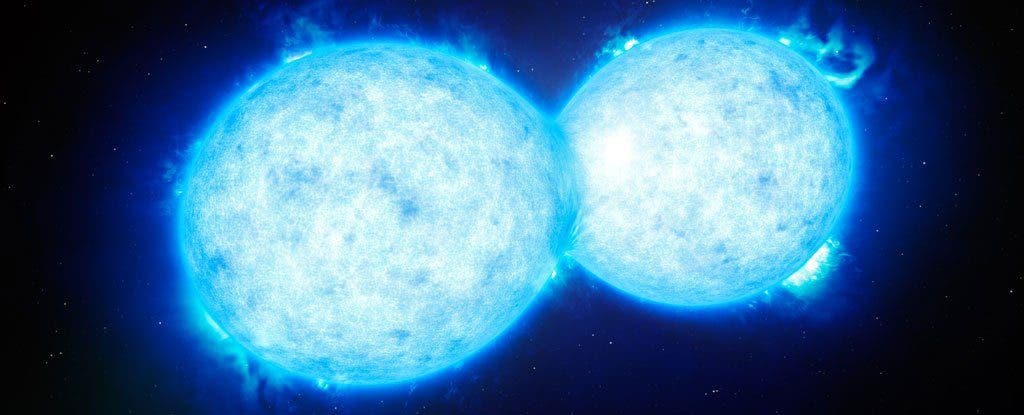About 160,000 light-years away, two stars are overlapping in what could be poetically described as an explosive catastrophic kiss.
An international team of astronomers has used the European Space Observatory’s (ESO) Very Large Telescope to detect the dramatic double star system called VFTS 352. Located in the Tarantula Nebula, VFTS is one of the hottest and most massive double star system that’s so far been discovered. The manner in which the two stars are overlapping is absolutely incredible, with as much as 30 percent of their material being shared.
To make things even more interesting, the stars are actually huge. The combined mass of VFTS 352 is 57 times that of our Sun, and with all that mass comes huge temperatures – something exacerbated by the interaction between the stars.
“The VFTS 352 is the best case yet found for a hot and massive double star that may show this kind of internal mixing,” said Leonardo A. Almeida of the University of São Paulo in Brazil, and lead author of the study. “As such it’s a fascinating and important discovery.”
Indeed, this type of cosmic intimacy is really hard to find, because obviously, it’s really rare, and it doesn’t last for very long. No matter how this ends, the result is going to be catastrophic.
“If it keeps spinning rapidly it might end its life in one of the most energetic explosions in the Universe, known as a long-duration gamma-ray burst,” said lead scientist Hugues Sana of the University of Leuven in Belgium.
This would mean that the stars rotate around each other faster and faster in a maddening dance, until they ultimately collapse into one rapidly rotating gigantic star. The second potential outcome is perhaps even more spectacular, because we’ve never seen it before: a double black hole.
“If the stars are mixed well enough, they both remain compact and the VFTS 352 system may avoid merging. This would lead the objects down a new evolutionary path that is completely different from classic stellar evolution predictions,” said Selma de Mink of the University of Amsterdam in the Netherlands. “In the case of VFTS 352, the components would likely end their lives in supernova explosions, forming a close binary system of black holes. Such a remarkable object would be an intense source of gravitational waves.”
Journal Reference: L. A. Almeida et al. Discovery of the massive overcontact binary VFTS 352: Evidence for enhanced internal mixing. The Astrophysical Journal, Volume 812, Number 2










